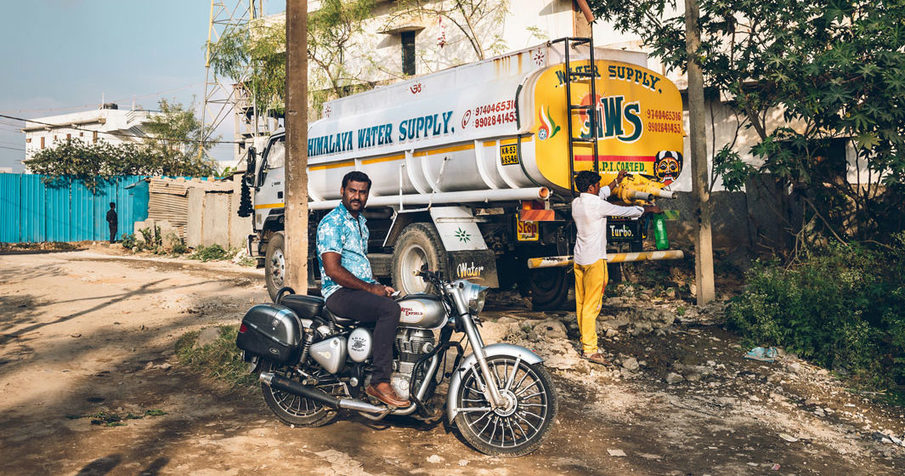ON THE OUTSKIRTS of Bangalore one morning last summer, a sullen young man named Manjunath stood high atop a cocoa-colored 1,850-gallon tanker truck, waiting for its belly to fill with water. The source of the liquid was a bore well, a cylindrical metal shaft puncturing hundreds of feet down into the earth. An electric pump pulled the water up from the depths and into a concrete cistern; from there, a hose snaked across the mud and weeds and plugged into Manjunath’s truck. As the water gushed into the tanker, a muffled sound emerged, like rain on a tin-sheet roof.
Once the tank was full, Manjunath disconnected the hose, climbed down, and settled into the truck’s cab. Then he drove out through a web of newly tarred back streets in the suburb of Whitefield. He passed rows of half-finished buildings, still gray from raw cement, and he honked often so that motorcycles and pedestrians could scurry out of the way. Whitefield’s roadways are almost always coagulated with traffic. Over the past two decades, the area has become home to major outposts of Oracle, Dell, IBM, and GE, as well as countless IT parks—proud, gleaming edifices that Uber drivers here recognize as major landmarks. When people describe Bangalore as India’s Silicon Valley, they’re really talking about Whitefield. From the altitude of the truck’s cab, though, Whitefield looked somewhat less impressive—smaller and flimsier, even more starved for space than it already was.
Sourced through Scoop.it from: www.wired.com




Leave A Comment